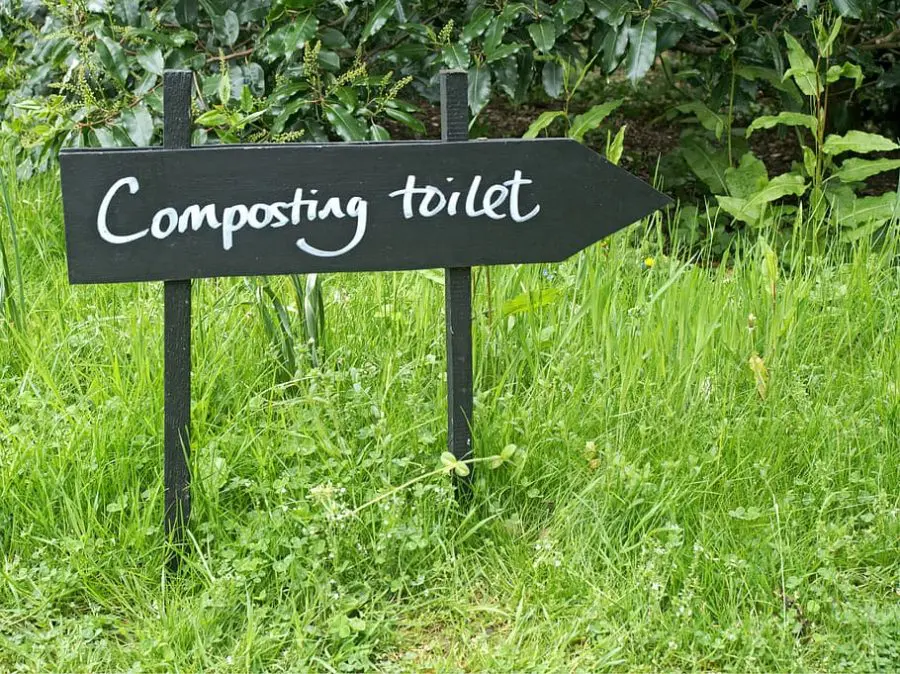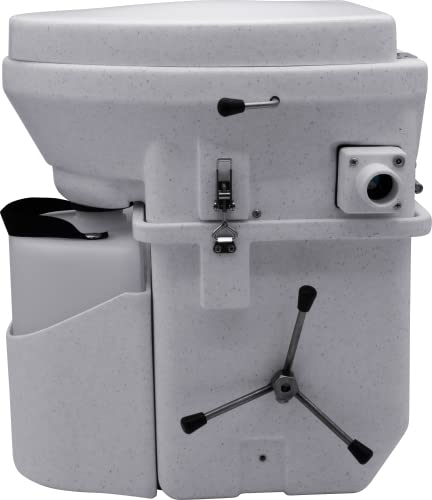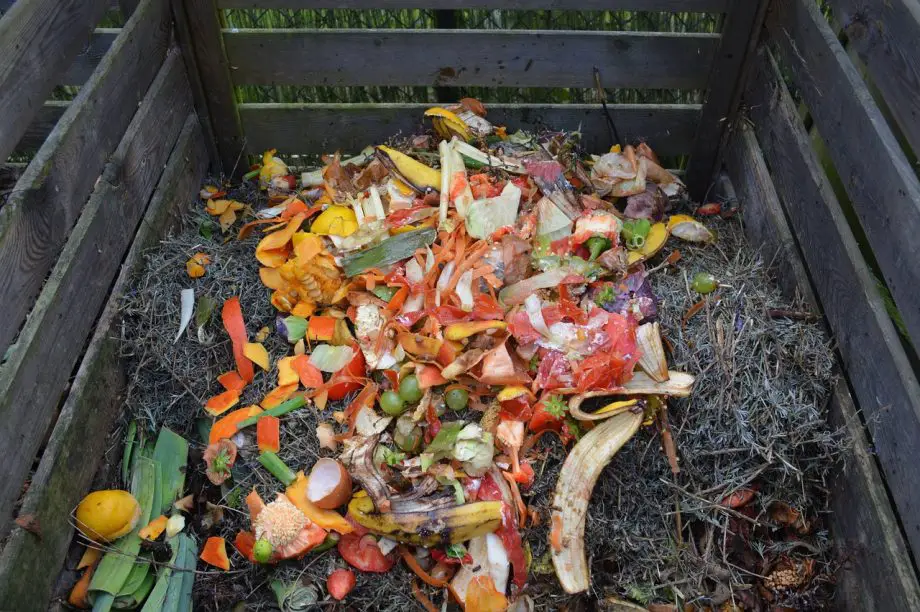
Want to know how do composting toilets work? Dive into the world of sustainable living and discover the benefits of these innovative systems!
Ever been on a camping trip or visited an eco-friendly home and stumbled upon a composting toilet?
If you found yourself scratching your head and wondering, how do composting toilets work? you’re not alone!
It’s a question that piques the curiosity of many. These intriguing devices are more than just a novelty; they’re a step towards sustainable living.
Let’s dive in and unravel the mystery behind how they transform waste into something beneficial for the environment!
How Do Composting Toilets Work?
How do composting toilets work? It’s a question that might have crossed your mind if you’ve ever explored the world of sustainable living or considered an eco-friendly alternative to traditional toilets.
In this post, we’ll uncover the fascinating mechanics behind composting toilets, explore different types, and delve into their environmental benefits.
From basic functioning to maintenance considerations, we’ll cover everything you need to know about these innovative systems.
Whether you’re considering one for your RV, or tiny home, or just curious about how they contribute to water conservation, this guide has got you covered!
Composting toilets is an innovative solution to managing human waste.
Unlike traditional toilets that rely on a sewage system, composting toilets use natural processes to turn waste into valuable compost material.
They’re a great choice for tiny home living, rural areas, and those looking to reduce water consumption.
You can find composting toilets on Amazon and read customer reviews
Composting Toilets – A Problem Solver
In some areas installing a septic system is not feasible. Maybe you can’t pass a perk test or need an expensive mound system costing thousands of dollars.
A composting toilet can be the perfect solution and save the day.
Definition and Overview of Composting Toilets
So, what exactly are composting toilets, and why are they gaining popularity? Let’s break it down!
Composting toilets are a type of toilet that doesn’t use any water or very little, unlike the flush toilets we’re used to in our homes.
Instead of flushing waste away, they compost it. Think of them as a mini garden compost pile but for human waste. Intriguing, right?
The process is pretty clever. When you use a composting toilet, aerobic bacteria get to work, breaking down the waste along with other organic materials like peat moss or sawdust.
Over time, this mixture turns into a humus-like substance, which is dry and mostly odorless.
It can even be used as fertilizer in some cases, depending on local laws.
Composting toilets come in various shapes and sizes, from portable ones ideal for travelers to permanent installations designed to last for years.
Some are simple and can be DIYed, while others come with features like fans and heaters to speed up the composting process.
The beauty of composting toilets is that they offer an eco-friendly alternative to traditional sewage systems or septic tanks.
They save gallons of water, reduce pollution, and provide a sustainable solution, especially in remote or off-grid locations.
Whether you’re an environmental enthusiast or just curious about different ways to reduce your carbon footprint, composting toilets present an interesting and practical option.
They’re not just a trend; they’re a testament to human innovation in harmony with nature. How cool is that?
Types of Composting Toilets
Now that we’ve got a grasp on what composting toilets are all about, let’s dive into the different types that exist.
Just like traditional toilets, composting toilets come in various shapes and styles to suit different needs and preferences.
Whether you’re living in an RV, or a tiny home, or looking for an off-grid solution, there’s a composting toilet designed just for you.
In this section, we’ll explore the main types of composting toilets, how they work, and what sets them apart.
Ready to discover the perfect fit for your eco-friendly lifestyle? Let’s get started!
RV Composting Toilets
Hitting the road in an RV? Composting toilets can be your best travel buddy!
RV composting toilets are designed specifically for those on-the-go adventures.
Unlike traditional flush toilets, they don’t require a connection to a city wastewater system or septic tank.
Imagine the freedom of not worrying about finding a place to empty a waste tank every week!
RV composting toilets are Ideal for the average person who loves to travel, these self-contained units are a great option.
These toilets are compact, lightweight, and super efficient. They use aerobic bacteria to break down waste, often without any water at all.
Plus, they’re odorless, which is a big win in a confined space like an RV.
If you’re planning to explore the great outdoors without leaving a trace, RV composting toilets are a fantastic option.
Tiny Home Composting Toilets
Living in a tiny home? Space is precious, and so is sustainability. Tiny home composting toilets are designed to fit snugly into smaller spaces without compromising efficiency.
They’re a great option for those looking to minimize water usage and environmental impact.
These toilets are more than just space-savers; they’re a statement of a conscious, eco-friendly lifestyle.
Whether you’re permanently settled in a tiny home or just experimenting with minimalist living, a composting toilet can align perfectly with your values and needs.
Tiny home composting toilets are perfect for tiny house living, these toilets offer a waterless system that’s eco-friendly.
Off-Grid Composting Toilets
Dreaming of a life away from the hustle and bustle, completely off the grid? Off-grid composting toilets are your answer.
These toilets are designed for locations without access to electricity or conventional sewage systems.
Think remote cabins, mountain retreats, or even a secluded beach house.
Off-grid composting toilets come in various types, from slow composting toilets that work well in infrequent-use locations to active ones with fans and heaters for quicker waste degradation.
The common thread? They all offer a sustainable solution that doesn’t rely on traditional infrastructure.
Whether it’s the simplicity of a slow compost toilet or the efficiency of an active system, off-grid composting toilets provide a reliable and environmentally friendly option.
They’re proof that living in harmony with nature doesn’t mean sacrificing convenience or hygiene.
It’s all about finding the right balance and embracing innovation!
Off-grid composting toilets are ideal for those in rural areas without access to a septic system, these toilets provide a solution.
How they work
Alright, now that we’ve explored the different types of composting toilets, you might be wondering, But how do they actually work?
It’s a fascinating process that combines biology, engineering, and a touch of eco-friendly magic.
Whether it’s an RV, a tiny home, or an off-grid composting toilet, the underlying principles are quite similar.
In this section, we’ll unravel the science behind composting toilets and explain how they turn something we usually flush away into a resource.
Ready to dive into the nitty-gritty of how composting toilets transform waste? Let’s get to it!
Benefits in RVs: Save gallons of water compared to regular flush toilets.
RV life is all about freedom, exploration, and embracing the open road. But what about the practicalities, like dealing with waste?
That’s where RV composting toilets shine! These little marvels are designed to make life on the road easier and more sustainable.
Here’s why:
Water-Saving: RV composting toilets don’t need water to flush, saving those precious gallons for other uses.
Odor-Free: Worried about smells in a confined space? These toilets manage waste in a way that minimizes odors.
Eco-Friendly: By composting waste instead of flushing it into a septic system, you’re reducing pollution and embracing a greener lifestyle.
Convenience: No need to find dump stations or deal with sewage hoses. It’s all about simplicity and enjoying your journey!
Slow Composting Toilets
Now, let’s talk about slow composting toilets. Slow composting toilets are dry toilets and use aerobic bacteria and carbon-rich material like wood chips.
Description and Usage: Slow composting toilets are often used in remote or infrequently visited locations.
They’re simple, consisting of a box with a seat on top and a compost system underneath. No fancy gadgets, just nature doing its thing.
Difference from Pit Toilets: Unlike pit toilets, which are left behind when full, slow composting toilets actively break down waste into compost.
Pit toilets can contaminate groundwater, while slow composting toilets are a more environmentally responsible choice.
Active Composting Toilets – With ventilation systems and fans, these toilets speed up the composting process
Last but not least, we have active composting toilets:
Features like Fans, Heaters: These toilets are the high-tech cousins of slow composting toilets.
They often come with fans to oxygenate the waste and heaters to maintain optimal temperatures for composting.
It’s like having a little composting factory right in your bathroom!
Starter Culture and Efficiency: Some active composting toilets include a starter culture to kickstart the composting process.
This ensures that the right bacteria are present, making the composting process more efficient and reliable.
Whether it’s the convenience of RV composting toilets, the simplicity of slow composting toilets, or the efficiency of active composting toilets, each type has unique features that cater to different needs and preferences.
It’s all about finding the one that fits your lifestyle and embracing a more sustainable way of living. Isn’t it amazing how something as every day as a toilet can be a gateway to a greener world?
How Composting Toilets Work
Now that we’ve explored the various types of composting toilets, it’s time to dig a little deeper into the mechanics of how they actually function.
You might be thinking, A toilet that doesn’t flush? How does that even work? Well, it’s a blend of science, nature, and some clever design.
From waste decomposition to the use of carbon-rich materials, the process is both fascinating and environmentally friendly.
In this section, we’ll pull back the curtain and take a closer look at the inner workings of composting toilets.
Buckle up, because we’re about to embark on a journey into the world of waste transformation!
Basic Functioning
Let’s start with the basics. How does a composting toilet function without water or flushing?
It’s all about creating the right environment for waste to break down naturally.
Instead of sending waste down the drain, composting toilets contain it, allowing natural processes to turn it into compost.
It’s like having a mini compost pile right in your bathroom but without the mess or smell!
Using organic material like peat moss, they turn solid waste into compost piles.
Waste Decomposition
Waste decomposition is the heart of how composting toilets work.
Aerobic bacteria (the good guys) break down the waste, turning it into a dry, odorless material.
It’s a slow process, but it’s efficient and environmentally friendly.
Imagine turning something usually considered waste into a resource. That’s the magic of composting toilets!
Use of Carbon-Rich Material
Here’s where things get interesting. To help the decomposition process, composting toilets use carbon-rich materials like sawdust, coconut coir, or wood shavings.
These materials not only help control odors but also create the perfect balance for composting.
It’s like adding seasoning to a recipe; it just wouldn’t be the same without it!
Slow vs Active Systems
Now, let’s compare slow and active systems:
Slow Systems: These are simple and often used in remote locations. They rely on time and natural processes to break down waste. Oxygen levels and moisture content are key.
Active Systems: These are more advanced, with features like fans and heaters to speed up composting. They’re great for more frequent use and offer quicker results.
Temperature Considerations
Temperature plays a crucial role in composting toilets. The right temperature helps the bacteria do their job efficiently.
Some active systems even have heaters to maintain the optimal temperature. Think of it as creating a cozy home for the bacteria to thrive!
Water Balance
Last but not least is water balance. Too much water can slow down the composting process, so some systems divert urine away from the compost.
It’s all about finding the right balance to keep the composting process humming along smoothly.
So there you have it! From basic functioning to the nitty-gritty of waste decomposition, composting toilets are a marvel of nature and innovation.
Whether it’s the simplicity of slow systems or the efficiency of active ones, they offer a sustainable and fascinating alternative to traditional toilets.
Who knew that something as mundane as a toilet could be so intriguing and environmentally conscious? It’s a small step that can make a big difference in our world!
Maintenance and Considerations
Alright, we’ve delved into the types and workings of composting toilets, but what about keeping them up and running?
You might be wondering, Do composting toilets require a lot of maintenance? or What should I consider if I want to install one?
Great questions! In this section, we’ll explore the maintenance and considerations that come with owning a composting toilet.
From regular upkeep to choosing the right system for your needs, we’ll cover all the essential details.
If you’re thinking about taking the plunge into the world of composting toilets, this is the information you’ll want to have handy. Let’s dive in!
Regular Maintenance
Owning a composting toilet isn’t just about enjoying the eco-friendly benefits; it also comes with some responsibilities.
Regular maintenance is key to keeping your composting toilet working smoothly. This includes:
Regular Maintenance: Includes compost removal and checking vent pipes.
Cleaning: Just like a standard toilet, you’ll need to clean the exterior. But don’t worry, it’s a breeze!
Monitoring: Keeping an eye on things like moisture content and compost level ensures everything’s working as it should.
Adding Carbon-Rich Material: Remember those carbon-rich materials like sawdust or coconut coir?
You’ll need to add them regularly to keep the composting process humming along.
Compost Removal: Managing the compost heap.
Now, let’s talk about compost removal. Once the composting process is complete, you’ll have a humus-like substance that needs to be removed.
Depending on your system and local laws, you might use it as fertilizer or dispose of it as solid waste.
It’s a crucial part of composting toilet work, but with a little practice, it becomes a simple routine.
Urine Removal: Handling liquid waste
Last but not least, is urine removal. Some composting toilets separate urine from solid waste to maintain the right balance for composting.
If you have a urine-diverting compost toilet, you’ll need to empty and clean the urine container regularly.
It’s a bit more hands-on than a flush toilet, but think of the gallons of water you’re saving and the positive environmental impact you’re making!
So, whether it’s regular cleaning, compost removal, or urine handling, maintenance is an essential part of owning a composting toilet.
It might seem a bit daunting at first, but once you get the hang of it, it’s just part of the routine.
Plus, you’ll have the satisfaction of knowing you’re contributing to a greener world, one flush (or lack thereof) at a time!
Choosing the Right System
So, you’re sold on the idea of a composting toilet and ready to make the switch, but how do you choose the right system for your needs?
It’s like picking the perfect pair of shoes; it has to fit just right!
Whether it’s for an RV adventure, a tiny home lifestyle, or an off-grid retreat, the right composting toilet can make all the difference.
In this section, we’ll guide you through the considerations and options to help you find the perfect match.
From size to design preferences, we’ll cover everything you need to know to choose the composting toilet that’s just right for you. Let’s get started!
Size Considerations: From a single unit to a central system
When it comes to composting toilets, size really does matter! Here’s why:
Capacity: How many people will be using the toilet? If it’s for a family, you’ll need a larger system.
If it’s just for occasional use in a guest cabin, a smaller one might suffice.
Space: Think about where the composting toilet will be installed. In a tiny home or RV, space is at a premium, so a compact design might be best.
Frequency of Use: A larger system requires less frequent emptying, which might be a big plus if it’s your main toilet.
On the other hand, a smaller system might be perfect for a vacation home.
Design Preferences
Now, let’s talk about design. Composting toilets come in various styles and features, so you can find one that fits your taste and lifestyle. Options include self-contained compost toilets and waterless toilets
Aesthetics: Want something that looks like a traditional toilet? Or maybe something more rustic? There’s a composting toilet for every style.
Features: Some composting toilets come with fans, heaters, or even urine diverters. Think about what features are important to you.
Ease of Use: Consider how easy it is to use and maintain. Some systems are more user-friendly, with features like liners for easy cleaning.
Environmental Impact: If reducing water consumption or having a self-contained compost toilet is a priority, make sure to choose a system that aligns with your environmental goals.
Choosing the right composting toilet is a bit like finding the perfect home. It has to fit your needs, lifestyle, and preferences.
Whether it’s the size that matters most or the design that catches your eye, taking the time to consider what’s important to you will lead to a choice you’ll be happy with.
And remember, it’s not just about functionality; it’s about embracing a sustainable lifestyle and making a positive impact on the environment. Happy toilet hunting!
Environmental Benefits
Now, let’s get to the heart of why many people are drawn to composting toilets in the first place: the environmental benefits.
It’s not just about having a unique toilet system; it’s about making a conscious choice to reduce our impact on the planet.
From water conservation to reduced pollution, composting toilets are champions of eco-friendliness.
In this section, we’ll explore the ways in which these innovative toilets are not only a great option for your home but also a friend to Mother Earth.
If you’ve ever wondered how a simple change in your bathroom can make a world of difference, you’re about to find out!
Water Conservation: Less water usage than conventional toilets
Let’s start with one of the most significant benefits of composting toilets: water conservation. Here’s how it works:
No Flushing Needed: Unlike regular toilets, composting toilets don’t need water to flush. Imagine the gallons of water saved every day!
Less Strain on Water Supply: By reducing water usage, composting toilets ease the demand for local water supply, especially in areas where water is scarce.
Waterless System: Some composting toilets are entirely waterless, making them a great option for off-grid living or places with limited water access.
Think about it this way: the average person uses around 3.5 gallons of water per flush.
With a composting toilet, that’s thousands of gallons saved each year. It’s like turning off the tap while brushing your teeth but on a much larger scale!
Reduced Pollution: Lower environmental impact
Next up we have reduced pollution. Composting toilets are not just about saving water; they’re also about protecting our environment:
No Sewage System Required: Composting toilets don’t need to be connected to a city wastewater system or septic tank, reducing the risk of contamination and pollution.
Natural Decomposition: By using natural processes to break down waste, composting toilets avoid the chemicals and energy used in traditional sewage treatment.
Useful End Product: The compost produced can be used to fortify soil (if local laws allow it), turning waste into a resource rather than a pollutant.
It’s like recycling your waste right in your own bathroom, turning something usually discarded into something useful, all while protecting our precious water resources and environment.
So, whether it’s the water-saving magic of a waterless toilet or the pollution-fighting power of natural decomposition, the environmental benefits of composting toilets are clear.
They’re not just a trendy alternative; they’re a responsible choice for those looking to live a more sustainable and eco-conscious lifestyle.
It’s a small change with a big impact, and it’s one more way we can all do our part to take care of our beautiful planet!
Advantages and Challenges
Alright, we’ve explored the workings, maintenance, and environmental perks of composting toilets, but what about the overall advantages and challenges?
Just like any other product, composting toilets come with their own set of pros and cons.
In this section, we’ll take a balanced look at both sides of the coin. From saving water and energy to understanding the potential hurdles in installation, we’ll cover it all.
Whether you’re already on board with composting toilets or still weighing your options, this part will give you a well-rounded view of what to expect.
Let’s dive into the nitty-gritty of the advantages and challenges of composting toilets!
Saving Water and Energy: Solar power options available
One of the standout advantages of composting toilets is the savings on both water and energy:
Water Savings: As we’ve discussed, composting toilets don’t require flushing, saving gallons of water every day. It’s like having a rain barrel in your bathroom, conserving water where it’s often used most.
Energy Efficiency: Traditional sewage systems require energy to treat and transport waste. Composting toilets, on the other hand, use natural processes, cutting down on energy consumption.
Fewer Odors: No more bad smells
Surprisingly, composting toilets can actually smell better than regular bathrooms:
Separation of Waste: By separating urine and feces, composting toilets reduce the odors that can occur when they mix.
Ventilation Systems: Many models come with fans that help ventilate the system, keeping your bathroom smelling fresh.
Eco-Friendly Waste: Utilizes organic matter
Turning waste into a resource is a game-changer:
Composting Process: The composting process turns human waste into a humus-like substance that can be used to enrich soil, turning a problem into a solution.
No Chemicals: Unlike traditional sewage treatment, composting toilets don’t rely on harmful chemicals, making the end product more eco-friendly.
Simple Installation: Many self-contained models available
Now, let’s talk about installation. One of the great things about composting toilets is that they can be surprisingly simple to install:
No Plumbing Required: Many composting toilets don’t require a connection to a sewage system, making installation a DIY-friendly project.
Versatility: Whether it’s an RV, a tiny home, or a cabin in the woods, composting toilets can be installed in various settings.
Cost-Effective: Without the need for extensive plumbing, the installation can be more cost-effective compared to traditional toilets.
However, it’s worth noting that some models might require professional installation, especially if they come with features like fans or heaters.
In a nutshell, composting toilets offer a host of advantages, from water and energy savings to eco-friendly waste management and simple installation.
They’re not just a trendy alternative; they’re a practical and responsible choice for those looking to make a positive impact.
Like planting a tree in your backyard, it’s a small step with lasting benefits. But, as with anything, understanding the challenges and making an informed decision is key. Happy composting!
FAQs
You’ve got questions, and we’ve got answers! When it comes to composting toilets, it’s natural to have a few queries, especially if it’s a new concept for you.
From the practical How do I empty it? to the more curious Will it smell bad? we’ve gathered some of the most frequently asked questions about composting toilets.
In this section, we’ll tackle these questions head-on, providing clear and concise answers.
Think of it as a friendly chat over a cup of coffee, where we demystify everything you’ve ever wanted to know about composting toilets. So, grab your virtual cup, and let’s dive into these FAQs!
Q: Do you have to empty a composting toilet?
A: Yes, you do have to empty a composting toilet. The frequency depends on the number of users and the specific design of the toilet.
Some might require emptying once a year, while others might need more frequent attention.
It’s like taking out the trash; it’s a regular part of maintenance but can be quite simple depending on the system you choose.
Q: Can insects get into a compost toilet?
A: It’s unlikely that insects will get into a properly functioning compost toilet.
If everything is balanced and working as it should, insects shouldn’t be a problem.
If they do appear, it might be a sign that something is out of balance in the system, much like finding pests in your garden might signal an issue.
Q: Do composting toilets smell bad?
A: No, thanks to aerobic decomposition composting toilets don’t typically smell bad.
In fact, they can smell better than regular toilets. The separation of urine and feces, along with proper ventilation in some models, helps reduce odors.
It’s like having a well-ventilated kitchen; the right airflow keeps things smelling fresh.
Q: Where does the poop go in a composting toilet?
A: In a composting toilet, the poop doesn’t go anywhere like it does in a flush toilet.
It goes into a compost bin or central compost system. It stays in the toilet or a connected composting chamber, where it’s broken down into a humus-like substance through natural decomposition.
Think of it as a mini compost pile right in your bathroom, turning waste into a useful end product. It’s a closed-loop system that turns a waste problem into a soil solution!
Conclusion
And here we are, at the end of our enlightening journey through the world of composting toilets.
From understanding the different types to exploring the environmental benefits and addressing common questions, we’ve covered a lot of ground together.
In this concluding section, we’ll wrap up our discussion, summarizing the key points and offering some final thoughts.
Whether you’re considering installing a composting toilet in your home or just curious about how they work, I hope this guide has provided valuable insights.
So, let’s take a moment to reflect on what we’ve learned and why composting toilets might just be the unsung heroes of sustainable living. Shall we?
Summary
We’ve embarked on quite the exploration, haven’t we? From different types to the best composting toilet options, we’ve covered it all. Let’s take a moment to recap what we’ve learned:
Understanding Composting Toilets: From RVs to tiny homes, we’ve seen the different types and how they function, turning waste into compost through natural processes.
Environmental Impact: We’ve delved into water conservation and reduced pollution aspects, making composting toilets a green choice.
Advantages and Challenges: From saving water and energy to understanding installation, we’ve weighed the pros and cons.
FAQs Addressed: We’ve tackled some common questions, demystifying the practical aspects of using a composting toilet.
It’s like taking a tour of a sustainable garden, and understanding each plant’s role in the ecosystem.
Composting toilets are a part of our environmental garden, each feature playing a part in a more sustainable future.
Final Thoughts: Embrace the end product of composting toilets for a greener future
So, what’s the takeaway from all of this? Composting toilets are more than just an alternative to traditional toilets; they’re a reflection of a conscious choice to live more sustainably.
They’re about turning waste into a resource, conserving water, and reducing our environmental footprint.
It’s like choosing to ride a bicycle instead of driving a car for short trips. It’s a small change, but it makes a difference.
Whether you’re considering a composting toilet for your home, RV, or off-grid living, understanding your options and making an informed decision is key.
In the end, composting toilets are not just about waste management; they’re about responsible living.
They’re a testament to human innovation and our ability to adapt and care for our planet. Like planting a tree or recycling, it’s a step towards a greener tomorrow.
So, here’s to composting toilets, the unsung heroes of sustainable living, and to you, for taking the time to understand and consider them. Happy composting!
You can find composting toilets on Amazon and read customer reviews
















